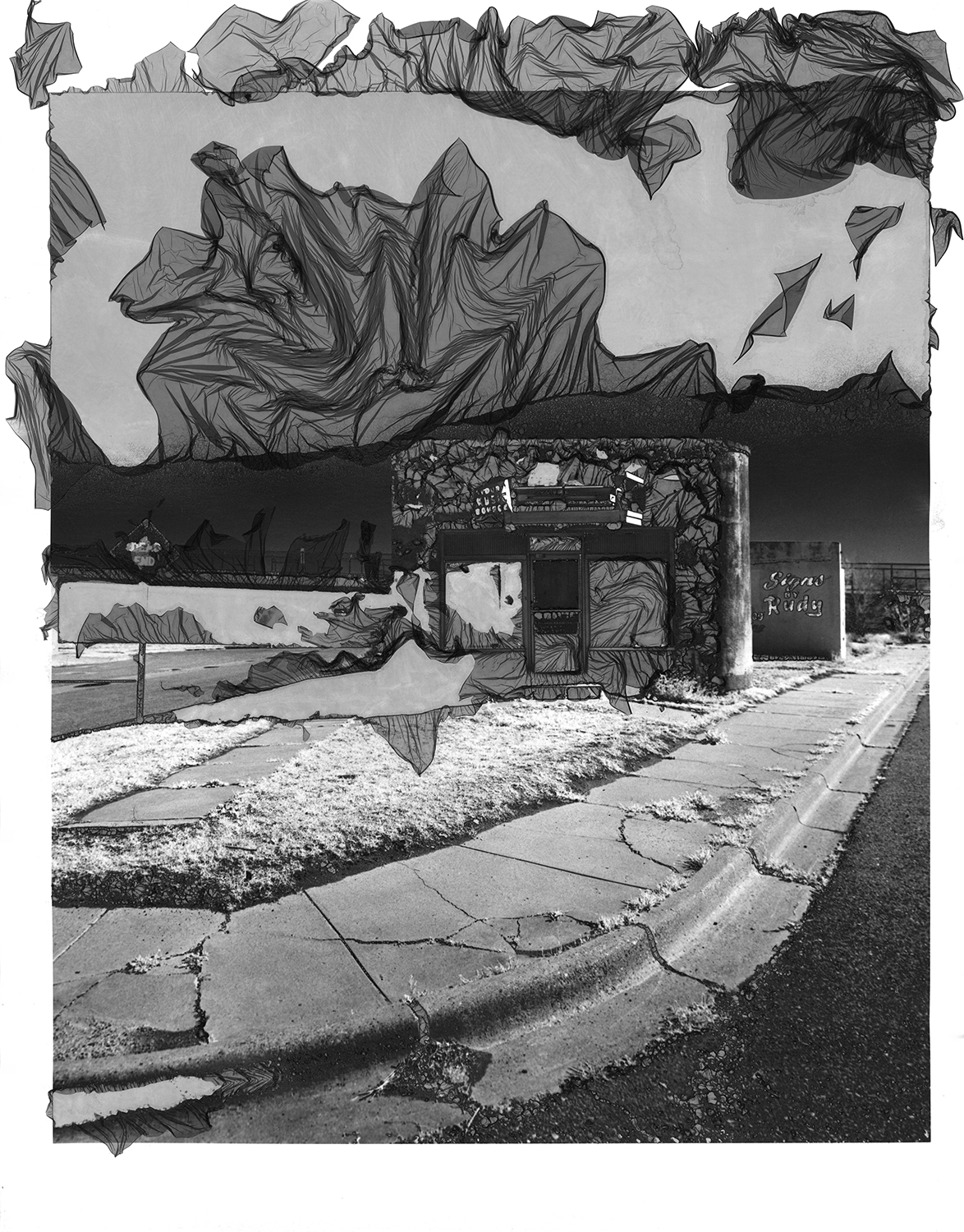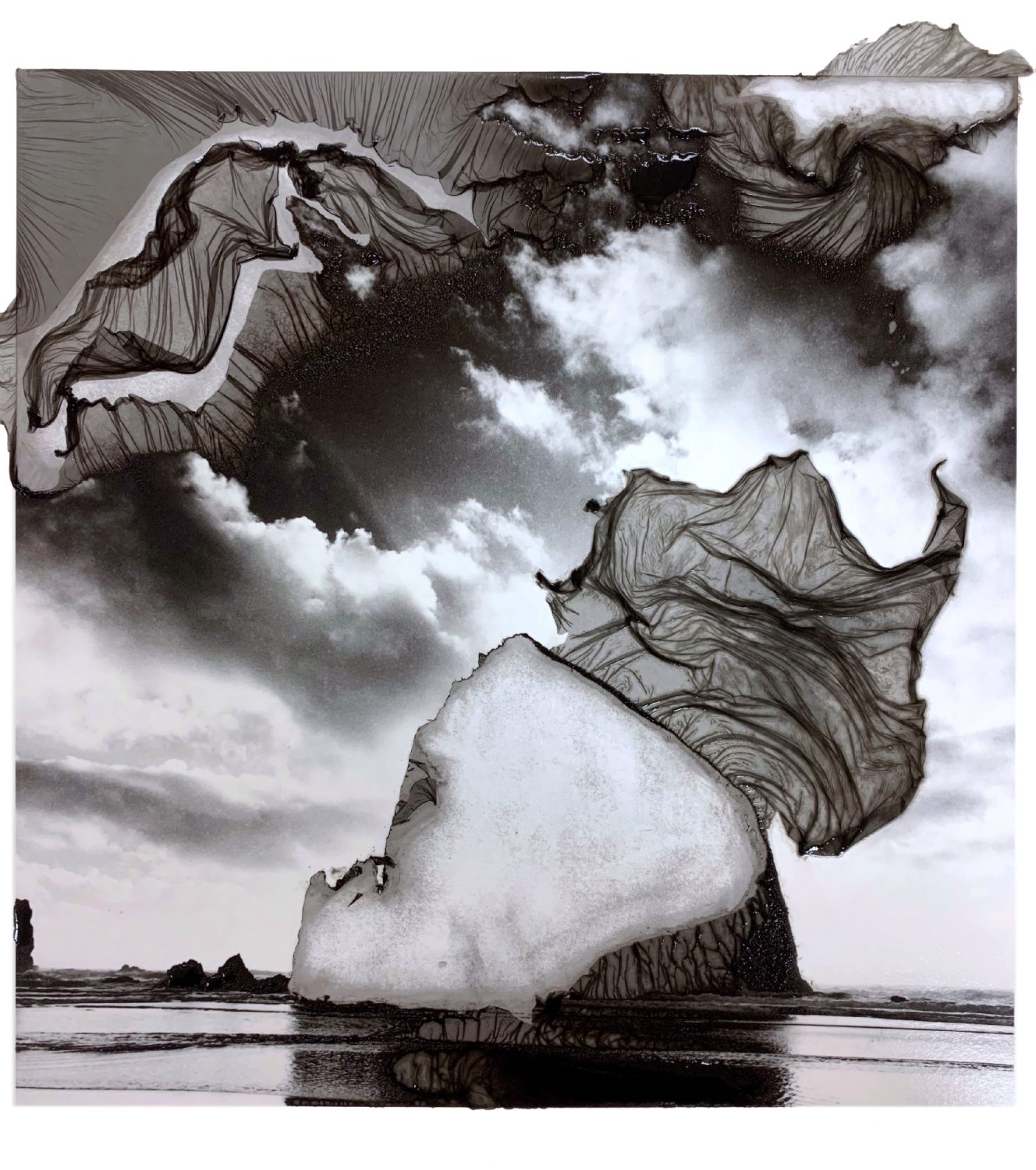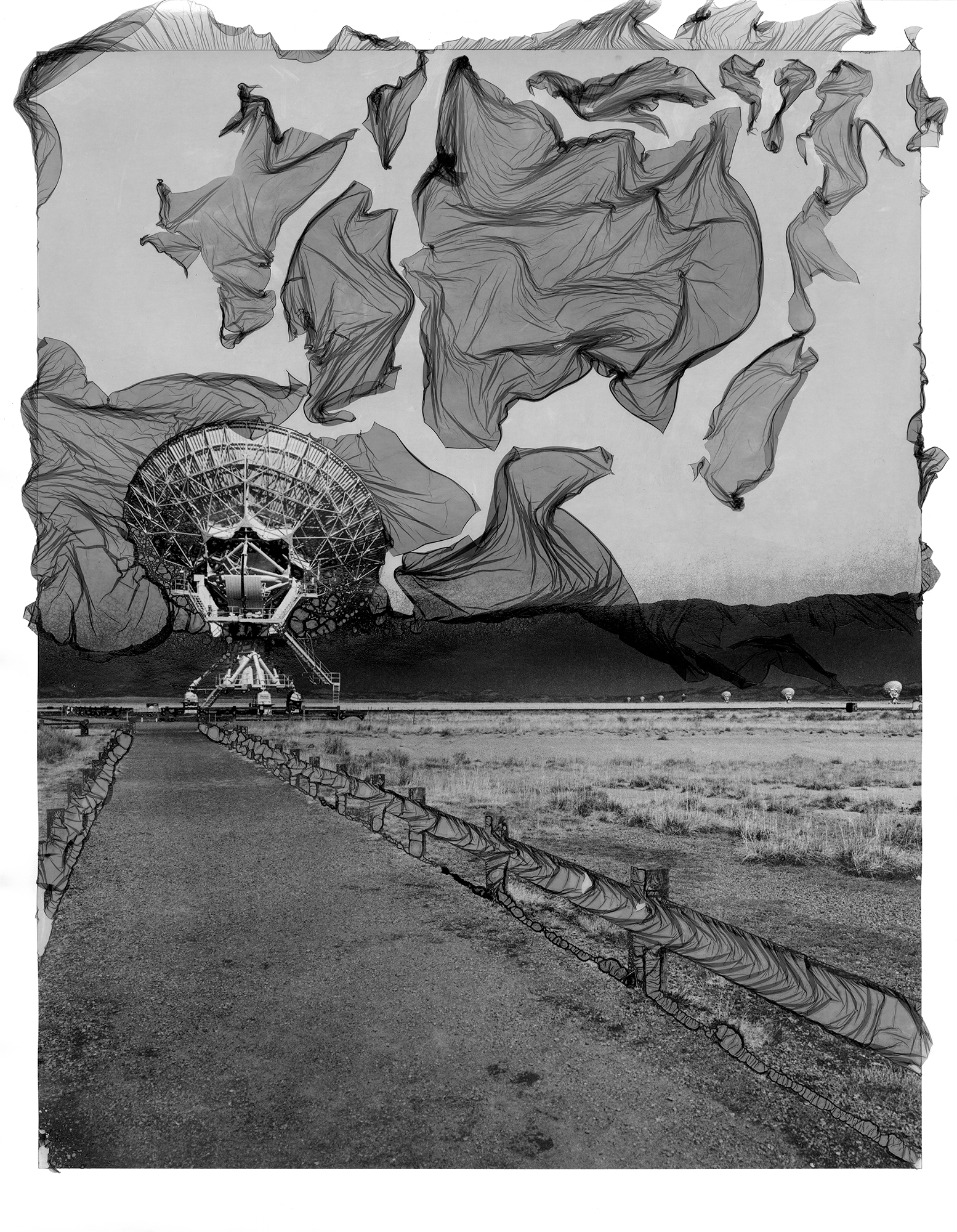While it’s been more than a year since I provided an update on my Mordançage work, I have been providing routine updates on social media. Since my last update, I’ve made six new prints – not a prolific rate, but I’ve been mixing it in with my continued Lumen Print research and enjoying the casual pace. Seeing that I’ve only had two short workshops on the process, this slow pace has allowed me to observe a few things about the process:
- 30% hydrogen peroxide is hard to find in Alaska. I’ve been working with older, expired solutions through various connections. Expired solutions and higher dilutions do work, but they require much more (obviously) to kick-start the process. I should take some time out and scour the local beauty supply stores to see if I can find any because shipping to Alaska is difficult.

The Drive-Inn, Tucumcari, Nm., Mordançage process. - While I was taught that you could refresh Mordançage solution with a fresh infusion of Hydrogen Peroxide, it wasn’t aware of how long solutions will last. I just mixed a new batch of chemistry yesterday after my old solutions from September ’19 and November(ish) ’19 finally exhausted. The old solution still does a great job of bleaching the print, but it does not cause the emulsion to bubble.
- I’ve found the traditional solution [ 750ml Water / 10g Copper Chloride / 35ml Hydrogen Peroxide / 50ml Glacial Acetic Acid / top with H20 ] to need an additional 5-10ml of Hydrogen Peroxide to start really working on the paper. This may be because of my paper choice (Ilford Warmtone).

- I need to spend more time on finding an appropriate post-mord washing temperature and length of time for that wash. I’ve been working between 90-110 degrees F and am cautiously thinking I have better luck at higher temperatures. That said, even though I’ve been told higher temperatures are supposed to create thinner veils, all the recent prints I’ve done at lower temps have had much more fragile veils. I’ve been able to keep prints with huge, ballooned emulsions through the entire re-development process without them bursting, but at lower temps, they fail prior to even leaving the initial wash. I’m more than happy to admit that this might be anecdotal evidence and I need to spend more time in the darkroom to really determine this.

Texaco, Santa Rosa, Nm., Mordançage Process. - I can easily spend an hour manipulating the veils after redevelopment – and I do so happily. This is probably my favorite part of the process – the slow, methodical manipulation of hair-thin emulsions on a thin bed of water. There’s so many possibilities!
- Enjoying literally the last step of this involved process means that I am still struggling with anticipating how long a print will take to complete. I’ve already spun off my basic printing, opting to do that days, sometimes weeks, in advance, but I enjoy the last step so much that I often overshoot my expected time in the darkroom by several hours. This is not a bad thing – just an observation.

Saguaro National Park, Arizona, Mordançage Process.
- During my pre-Covid trip to the Southwest back in March, I intentionally photographed with this process in mind. Previsualizing for that process meant that I chose infrared film. I really enjoyed not only getting impressive traditional infrared images out of the film, but realizing that was just a step toward an even more exciting image was thrilling.
- I’m fully aware that I have much to learn – and I’m likely doing several things that an accomplished Mordançage artist would never do because they know better. I’m certainly open to critique and assistance, but, boy, am I really enjoying the ride right now.
Earlier this year, I was proud to announce that one of my first Mordançage images, featured below, was selected in not one, but two, physical exhibitions. That sort of recognition for what is basically my fourth print in this process ever excites me in a myriad of ways. I’m looking forward to diving deeper into this process over the next few months!

+There are no comments
Add yours